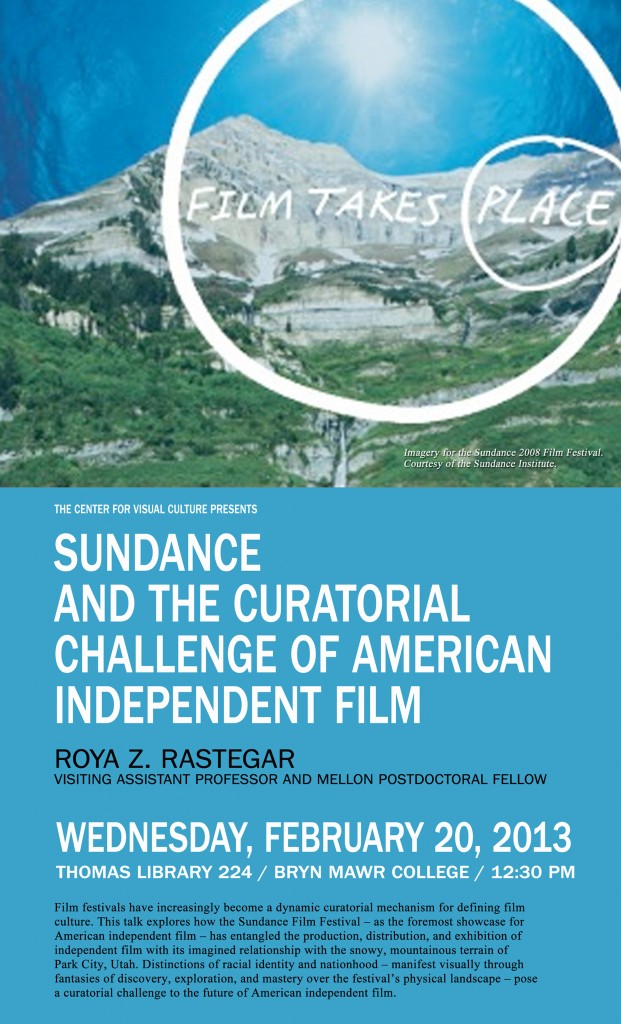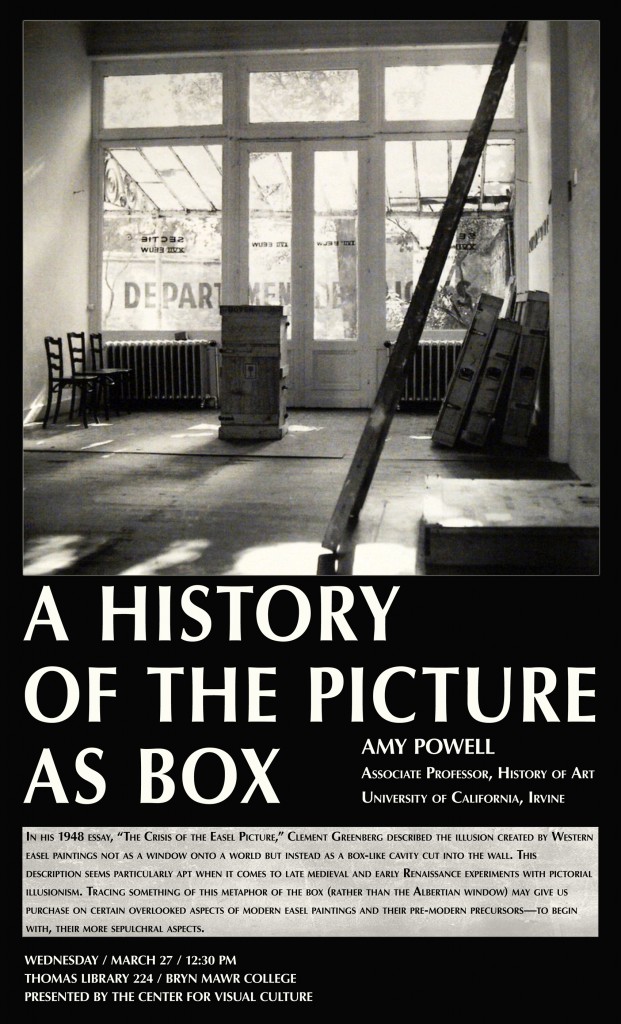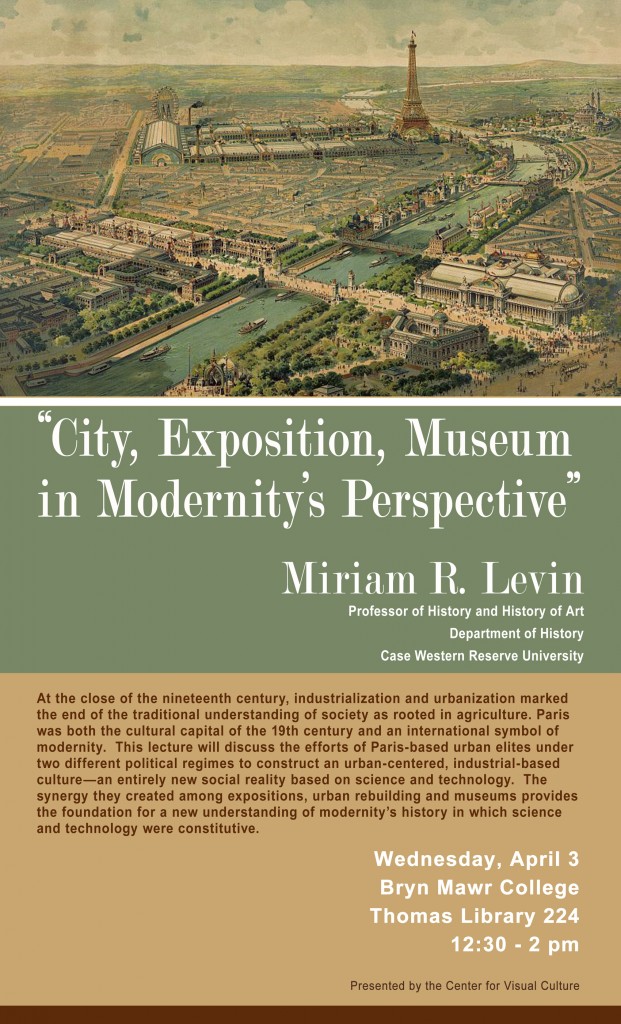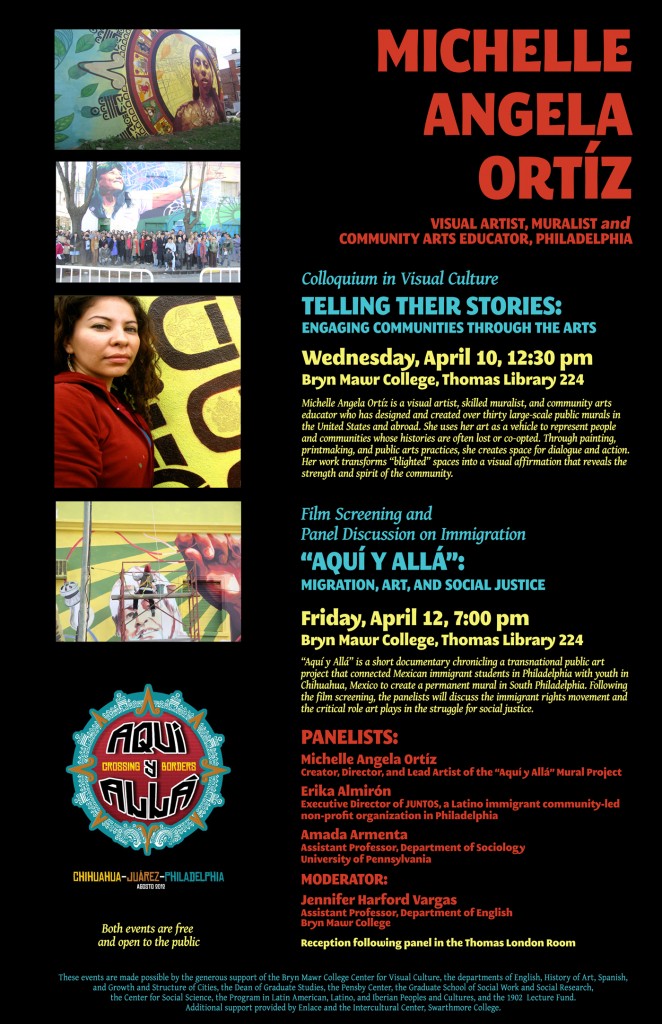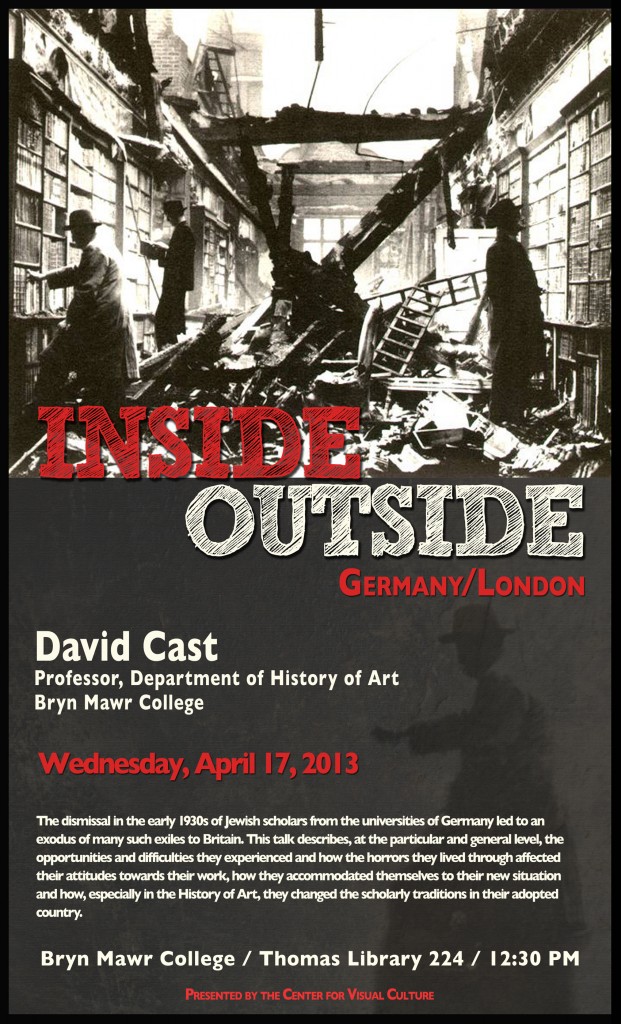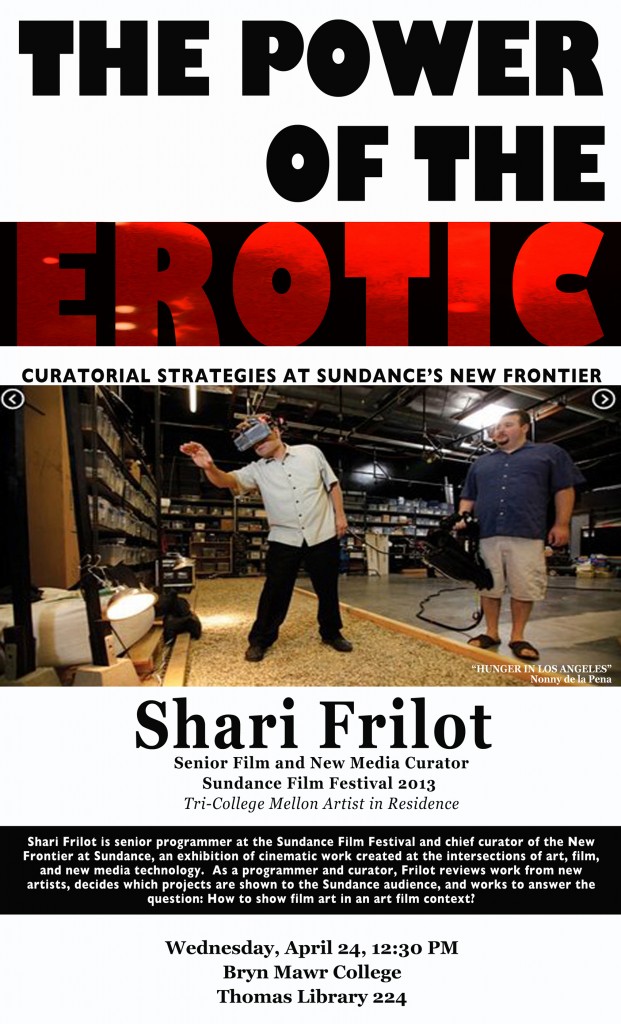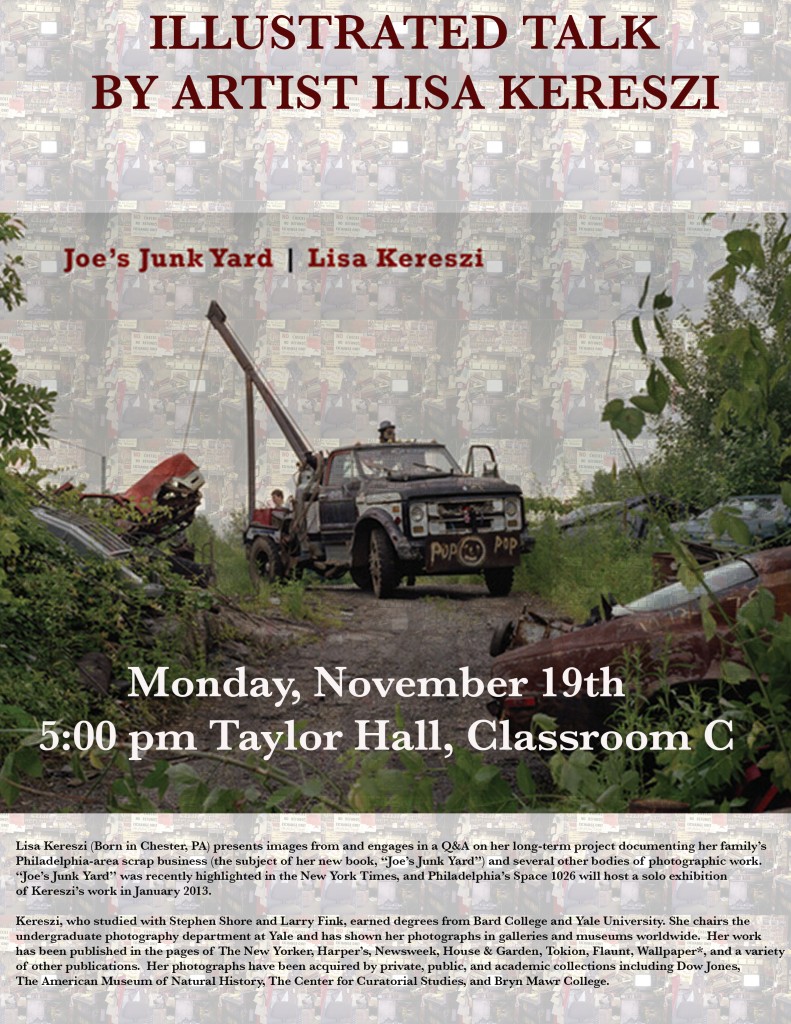Roya Z. Rastegar
Visiting Assistant Professor and Mellon Postdoctoral Fellow
Bryn Mawr College
“Sundance & the Curatorial Challenge of American Independent Film”
Film festivals have increasingly become a dynamic curatorial mechanism for defining film culture. This talk explores how the Sundance Film Festival – as the foremost showcase for American independent film – has entangled the production, distribution, and exhibition of independent film with its imagined relationship with the snowy, mountainous terrain of Park City, Utah. Distinctions of racial identity and nationhood – manifest visually through fantasies of discovery, exploration, and mastery over the festival’s physical landscape – pose a curatorial challenge to the future of American independent film.

